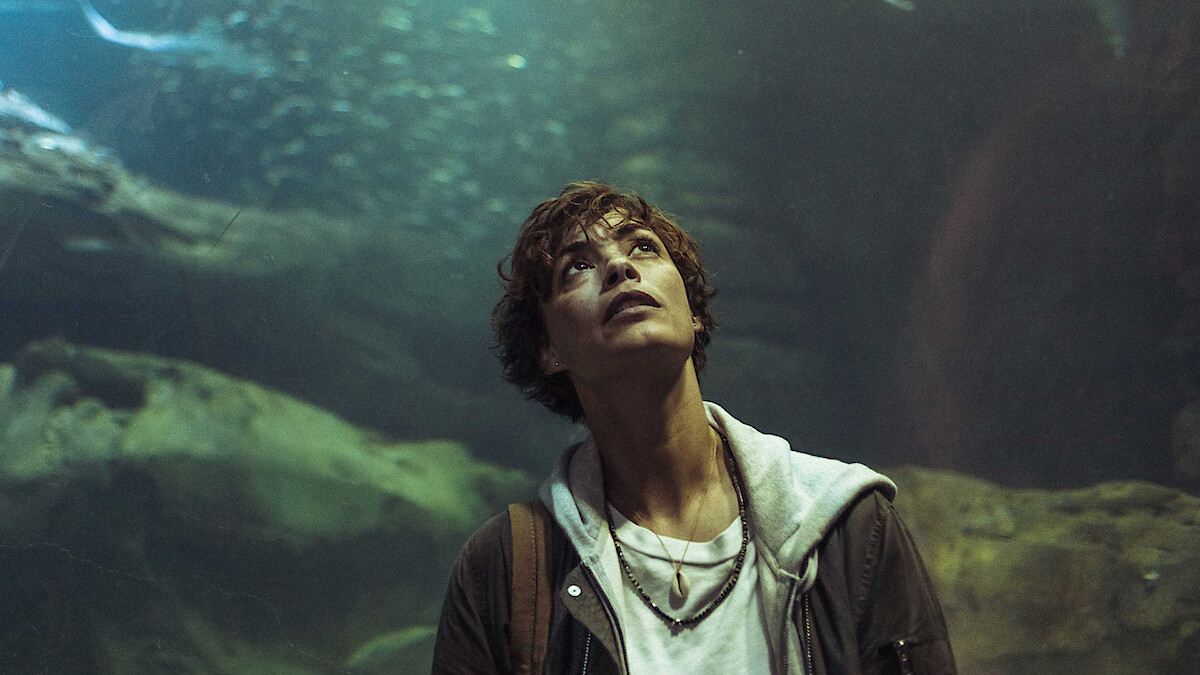
Why Netflix's 'Under Paris' Will Make You Never Want To Swim Again
Here's how the 2024 horror 'Under Paris' has achieved what few other shark films have before.

By Mark Travers, Ph.D. | July 19, 2024
In 1975, Jaws revolutionized the horror genre by showing us how utterly terrifying sharks can be. Steven Spielberg's masterpiece didn't just scare us; it created a cultural phenomenon that left an indelible mark on the collective psyche. Since then, an array of shark movies have tried to replicate that primal fear—but most were mediocre and quickly forgotten. However, in 2024, Netflix's Under Paris, a French film directed by Xavier Gens, has emerged to challenge this narrative.
Despite receiving a mix of reviews, Under Paris has skyrocketed to the top of Netflix's most-watched films globally, with viewers touting it as a potential rival to Jaws. This raises an intriguing question: how has this film managed to achieve what so many others have failed to do? To understand this, a deep dive into the psychological mechanisms at play in Under Paris is necessary. Here's a psychologist's take on how the film successfully toys with our minds by throwing us into the deep end of "thalassophobia."
What Is Thalassophobia?
Thalassophobia, as described by psychologists, is an intense fear of large bodies of water—such as oceans, seas and even deep lakes. People who suffer from this phobia often experience a range of symptoms when faced with deep water, including severe anxiety, shortness of breath, rapid heartbeat, sweating, nausea and a feeling of impending doom.
The fear factors associated with thalassophobia can vary, but they commonly include:
- The sheer vastness and depth of the water
- The potential presence of unseen creatures
- The inability to see the bottom
- The fear of drowning
These factors combine to create a powerful sense of vulnerability and helplessness that can be overwhelming for those affected.
According to a 2020 study, the relationship we have with the ocean is both complex and intricate. Various studies have found that interactions between people and water can lead to feelings of restoration and happiness. This phenomenon—known as the "blue space" effect—refers to predominantly aquatic environments such as rivers, lakes, coastal areas and oceans. The subsequent concept of the "blue mind" explains why humans are instinctively drawn to the ocean, and how being in or near the ocean can fill us with an inexplicable sense of tranquility, peace and well-being—and has shown to provide a wide range of wellness-related benefits.
Nevertheless, humans are air-breathing mammals, and we rely enormously on vision to find food and avoid danger. Thus, alongside a fear of the dark (nyctophobia), a fear of the sea (thalassophobia) can be just as significant. The incredibly vast and mysterious nature of the ocean—combined with its potential lurking dangers—can trigger deep-seated fears and anxieties in even the most water-loving individuals. And Xavier Gens knew just how to get this right in Under Paris.
How Under Paris Induces Thalassophobia
Under Paris follows a familiar premise in shark movies: a team of individuals striving to stop a shark from wreaking havoc. However, it goes a step further by presenting the terrifying idea that a formidable, unknown species of shark can infiltrate our cities. This premise alone upends our sense of safety and familiarity, transforming a bustling urban environment into a setting for primal fear. But, by setting its scenes in some of the most polluted and unnerving aquatic environments, Under Paris toys with viewers' expectations of the ocean and deep water like no other shark film:
- The first act is set in the Great Pacific garbage patch—an area so filled with plastic waste that it obscures the sky above.
- The second act moves to Paris' wastewater reservoirs near the catacombs, an incomprehensibly deep and dark setting where neither humans nor sharks should be.
- The brazen third act takes place in the Seine River during a triathlon, a familiar urban setting turned nightmarish.
In each of these three acts, the water conditions are abysmal. The Great Pacific garbage patch is unsafe for both humans and sea creatures. This depiction of the ocean in its worst state—a biohazardous zone with poor visibility, immense depth and teeming with waste—mirrors real-world ecological disasters. This setting induces fear by emphasizing the inherent dangers of polluted and uncharted waters, amplifying the fear of the unknown and unseen threats lurking beneath the surface.
The second act is an absolute nightmare set in a reservoir unsuitable for a large group of people. It is dark, and the presence of sharks in such a location is entirely unnatural. When the sharks appear, chaos ensues with people flailing, pushing, shoving and falling in their desperate attempts to escape. This scenario taps into primal fears of being trapped and helpless in a dangerous environment—and we can't help but mirror the characters' sheer terror and anxiety.
The third act, set in the Seine, hits closest to home. With the 2024 Olympics scheduled to take place in Paris, the Seine is a central, albeit filthy, part of the city where swimming has been banned since 1923. The appearance of a shark—one that shouldn't even survive in freshwater—along with its offspring, in such a familiar and supposedly safe environment, creates an unsettling sense of vulnerability. This scenario, while seemingly absurd, plays on real fears of our everyday spaces becoming dangerous.
Under Paris effectively induces thalassophobia by blending ecological crises with primal fears. The movie showcases environments in their worst possible states, filled with waste, darkness and chaos—which are sadly yet scarily true to the actual state of the world. This depiction of severely polluted waters, where sharks have no choice but to adapt and conquer, creates a hauntingly realistic backdrop. This effective portrayal leaves viewers questioning whether any body of water can ever truly be safe—making the fear of the darkness, vastness and unknown, unseen dangers beneath the surface both palpable and relatable.
A similar version of this article can also be found on Forbes.com, here.
